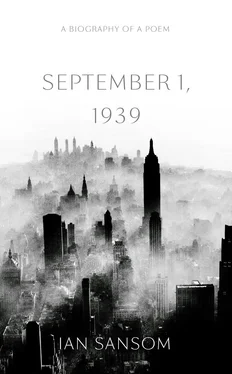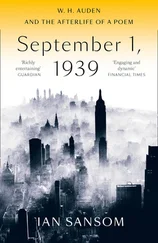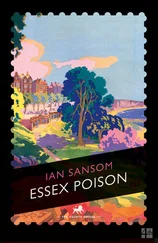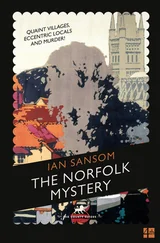There was also the small matter of his having abandoned England in 1939, and having taken the oath of allegiance and become an American citizen in 1946, something he was never allowed to forget, and for which he was certainly never forgiven. On learning of Auden’s death in 1973, the novelist Anthony Powell was rendered almost speechless with joy and disgust, declaring, ‘I’m delighted that shit has gone … It should have happened years ago … Scuttling off to America in 1939 with his boyfriend like a … like a …’ In 1956, memories of the war were still fresh. G. Wilson Knight had served as a dispatch rider in World War I, and in World War II Nicolson had been parliamentary secretary at the Ministry of Information. Auden’s war record was rather less distinguished. When he had left England in 1939, questions were asked in Parliament about his departure: he was a disappointment to the nation. When he arrived back in London at the end of the war, wearing his honorary US Army major’s uniform, as part of his role in the US Strategic Bombing Survey, people were appalled.
But if England wasn’t too sure about Auden, Auden wasn’t at all sure he wanted to spend too much time in England delivering the one lecture per term required by the university statutes. ‘The winter months’, he wrote to Enid Starkie, the flamboyant, publicity-seeking, cigar-smoking Rimbaud scholar who had proposed him as a candidate, ‘are those in which I earn enough dollars to allow me […] to devote myself to the unprofitable occupation of writing poetry. I do not see any way in which I could earn the equivalent if I had to reside in England during that period.’ Nonetheless, he allowed his nomination to go forward.
On Thursday, 9 February 1956, the result was announced.
Wilson Knight had attracted just 91 votes. Nicolson had secured 192. And Auden topped the poll with 216. He was therefore elected as professor, succeeding his old friend Cecil Day Lewis.
‘You have chosen for your new Professor’, Auden began his inaugural lecture – typically teasing and self-effacing – ‘someone who has no more right to the learned garb he is wearing than he would have to a clerical collar.’ Setting out the terms of his professorship, he went on:
Speaking for myself, the questions which interest me most when reading a poem are two. The first is technical: ‘Here is a verbal contraption. How does it work?’ The second is, in the broadest sense, moral: ‘What kind of a guy inhabits this poem? What is his notion of the good life or the good place? His notion of the Evil One? What does he conceal from the reader? What does he conceal even from himself?’
This book does a very simple thing. It asks Auden’s two obvious questions of his own poem ‘September 1, 1939’. How does it work? And what kind of a guy inhabits this poem?
In a sense, the first question is easy to answer. ‘September 1, 1939’ consists of 99 lines, written in trimeters, divided into nine eleven-line stanzas with a shifting rhyme scheme, each stanza being composed of just one sentence, so that – as the poet Joseph Brodsky has usefully pointed out – the thought unit corresponds exactly to the stanzaic unit, which corresponds also to the syntactic and grammatical unit. Which is neat.
Too neat.
Because, of course, this is only the beginning of an understanding of how the poem works. It takes us only to the very edge of the poem, to the outskirts of its territory. In order properly to understand ‘September 1, 1939’, we would have to investigate why Auden chose this rigorous, cramped, bastard form – and not, for example, an elegant villanelle, or a sestina, or a double sestina, traditional and virtuoso forms at which he excelled. And why did he begin a poem with an ‘I’, undoubtedly the most depressing and dreary little pronoun in the English language? And who is this ‘I’? And why do they ‘sit’ in one of the dives – why aren’t they standing? And how are they sitting? At a table? And where is this dive? And why is it a ‘dive’? And what exactly were the ‘clever hopes’ of this ‘low dishonest decade’? And why so many double adjectives? And so on and so on. This book will attempt to follow the route of some of these obvious but necessary questions, mapping the poem word by word, line by line and phrase by phrase.
And as for the ‘guy’ who inhabits this poem? What is his notion of the good life or the good place? What is his notion of the Evil One? What does he conceal from the reader? What does he conceal from himself?
These are also good questions.
‘September 1, 1939’ is an important poem, I believe, and worthy of scrutiny, because it provides us with a rare glimpse of a writer in the act of reinventing himself, at a culminating moment in world affairs. Like Ulysses and The Waste Land , like Guernica and The Rite of Spring , this poem is a snapshot of the artist in extremis , working at the farthest reaches of his capacities.
But ‘September 1, 1939’ is not only one of those rare coincidences in literature in which the force of history meets personal psychology and ideology, to produce something truly marvellous – it also represents a moment of crisis, where the great pressures at work both outside and inside the poem force certain flaws to become apparent. Not only that, it’s a poem whose troubled history involves its own self-destruction and reinvention: it therefore represents the art object as living organism, something that grows and changes, that is understood, misunderstood, appropriated, abandoned, recycled and reused, again and again. Above all, it is a poem that still reverberates with meaning and controversy, a poem that readers return to at times of personal and national crisis: it turns out that the ‘guy’ who inhabits Auden’s poem is us.
The aim of this book, then, is to demonstrate how a poem gets produced, consumed and incorporated into people’s lives – how, in the words of another of Auden’s great poems, ‘In Memory of W. B. Yeats’, the work of a poet becomes ‘modified in the guts of the living’, and not just modified, but colonised, metabolised, metastasised. It is a record of how and why we respond to great art.
Or, at least, it is a record of how and why I have responded to this particular example of great art, and of how the work of this particular poet has become modified in these particular guts – modified, metabolised and metastasised. There has been so much written about Auden by so many people – brilliant and insightful people – over so many years, that the best I can do is to try and explain the impact that reading and studying this poem has had on me. Not because there’s anything particularly interesting about me – on the contrary – but because I might usefully represent the common reader, the sensual man-in-the-street, the entirely average individual with a rather unusual interest in a particular work of art.
In the end, I hope that this book amounts to more than a record of my own peculiar tastes and notions and gives expression to that common sense of awe and inadequacy that we might all experience in the presence of great art, for how can one possibly begin to cope with someone like Auden, who was clearly a genius, and with something like this, which is clearly a masterpiece? What can one possibly say, except … ‘Wow!’?
I sit in one of the dives
On Fifty-Second Street
Uncertain and afraid
As the clever hopes expire
Of a low dishonest decade:
Waves of anger and fear
Circulate over the bright
And darkened lands of the earth,
Obsessing our private lives;
The unmentionable odour of death
Offends the September night.
Читать дальше












